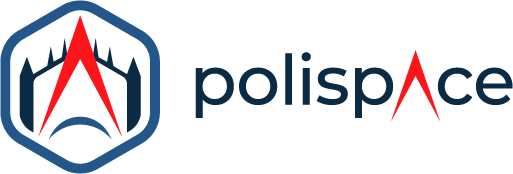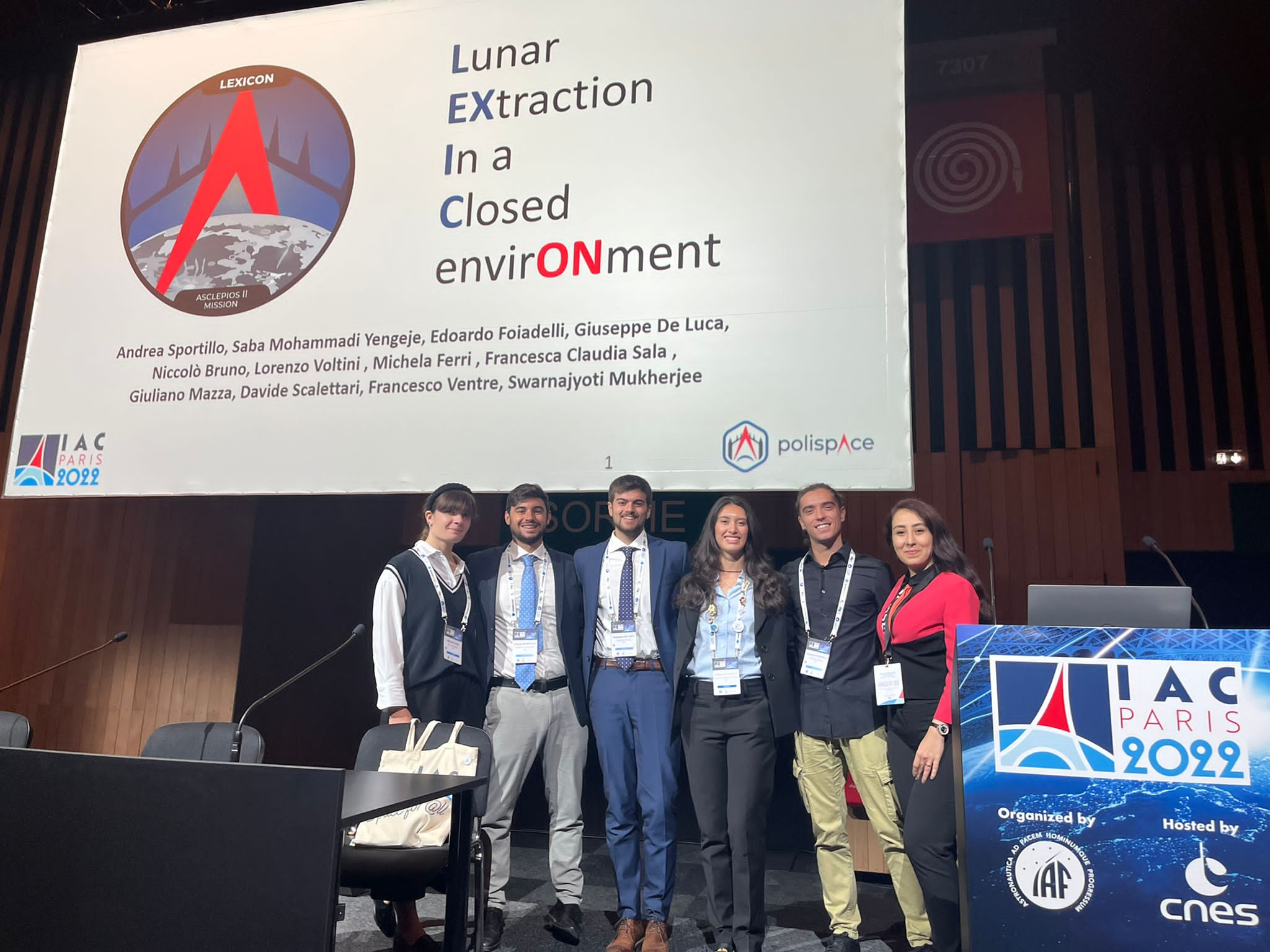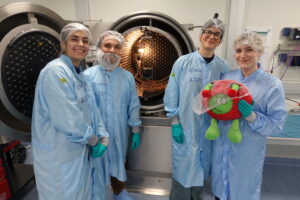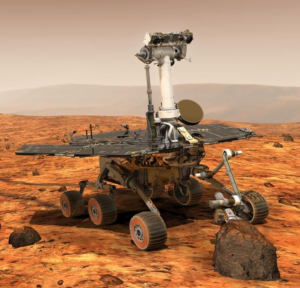In the last few years, there has been an increasing interest in returning to the Moon. Gaining reasonable confidence in lunar missions will broaden our horizons to Mars. NASA has concretized this ambitious project in the Artemis Mission, whose final part – Artemis III – consists of landing a human crew on the Moon and possibly building a lunar base.
Artemis III will be the first human-crewed mission to step on the Moon after the Apollo 17 mission designed 50 years ago.
Well, we sure need some accompanying music.
Alexa, play Back in Black by AC/DC.
Jokes apart, it’s an exciting and thrilling project, but what challenges must lunar missions face? What are the new technologies that need to be developed to fulfill these requirements of the industry?
One of the crucial issues of ISRU (In-situ Resources Utilization) is the lunar dust. Regolith (lunar dust) forms into conglomerates and can potentially be highly harmful to machines and – therefore – to the life-support system of astronauts, obstructing them. Unfortunately, the dust is not only present on the lunar soil but can also be produced by ISRU activities, such as drilling operations. The LEXICON project found a solution to this vital problem, involving an enclosed environment filtering system, an improved technology from the Apollo mission.
Before going into details of its design, we should better understand the crucial issues inherent to the lunar environment that this new technology needs to consider.
“Magnificent desolation.”
This is how Buzz Aldrin – an astronaut from Apollo 11 mission and the second astronaut in history to step on the Moon – describes it.
Indeed, the lunar environment is not accommodating at all and can be the cause of some critical aspects of in-situ missions.
The regions that NASA considers potential landing camps for Artemis missions are situated at the South Pole: the temperatures can vary from 25K in the shadowed craters to a maximum of 310K. Moreover, the Moon has a very rarified atmosphere and a low gravity environment that increase the spreading of dust. The lunar surface is expected to be electrostatically charged due to the incident plasma and to the UV from the Sun, and it’s covered in the regolith generated by micrometeorites impacts. Its composition is a fine and powdery dust of metallic oxides and silicates, and the size of its grains can vary from 1μm to 1 mm.
We can translate these characteristics of the lunar soil and environment into requirements that the filtering system needs to fulfill: the machine has to collect and confine the produced dust during ISRU activities, and the working temperature must be restricted between 100K and 300K because of the use of an inert fluid in liquid a gas state. The working fluid is Nitrogen, considered the safest and cheapest option. Even though Oxygen is liquid in that range of temperatures, too, it is excluded because it could react with non-oxidized dust particles. Helium is a valid option for Nitrogen because it could be directly extracted from the lunar soil. However, its high fugacity makes it quite challenging to use in practice.
LEXICON project’s design
Let’s now look closely at the LEXICON project’s design. It can be split into two main components: the dome and the filtering systems.
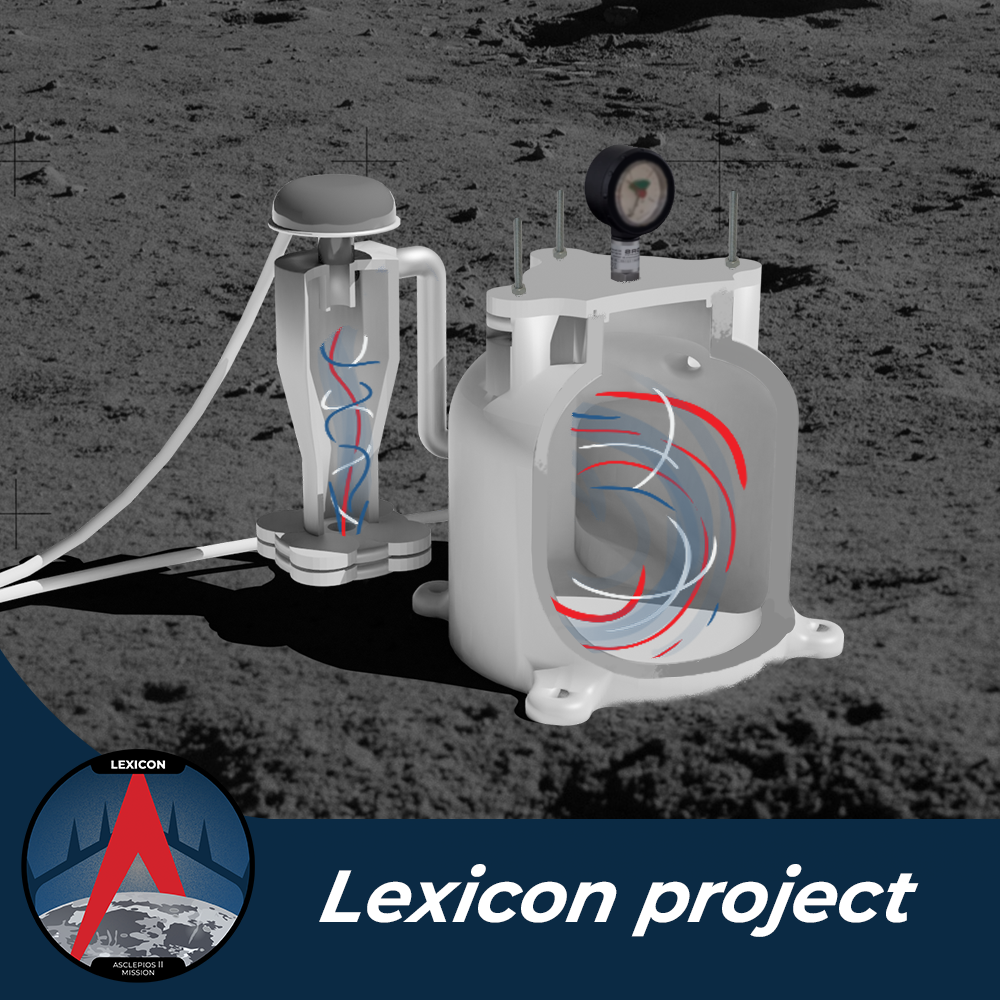
This new technology adopts the dust confinement method instead of the dust rejection one. The dust produced during the ISRU activities is collected into a pressurized dome, mixed with an inert gas, filtered out, and possibly reused. The dome can be made by Additive Manufacturing techniques plus some additional post-processing treatments to improve it. This second step is needed to increase air-tightness and avoid leaks. A conductive material shell has to be positioned to neutralize the electrically charged dust particles that could cause arcs and damage the structure. Due to the abrasive effect of the dust, more layers should be placed to avoid erosion. After the Dome, the inert fluid transports the dust into the filtering system. This is the project’s true innovation with respect to the Apollo Mission, where the grided filters adopted were easily clogged. LEXICON came up with a Cyclone Filter: a converging duct where the mass formed by the fluid and the dust creates a vortex. In this way, the dust slips against the filter’s walls and is collected at the bottom. At the same time, the fluid that has lower inertia manages to exit in the opposite direction. As well as the dome, the Cyclone filter can be made by Additive Manufacturing but needs to undergo post-processing steps to improve the air-tightness. The Cyclone Filter is followed by a grided filter that captures the remaining dust particles. This technology works unbothered also in the lunar low-gravity environment.
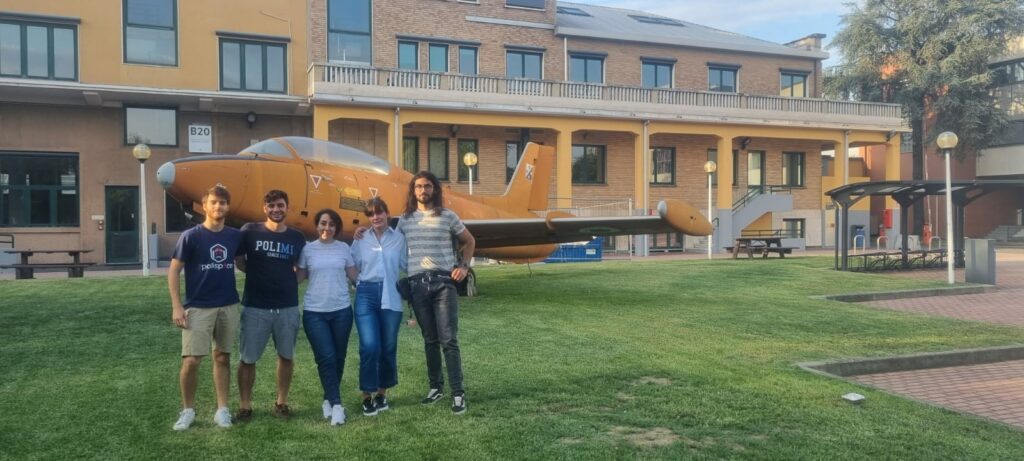
Asclepios Mission
The LEXICON team had the chance to test the prototype during the Asclepios Mission, an analog mission born from a student initiative from the Ecole Polytechnique Fédéral de Lausanne in Switzerland. A crew of 6 students was confined in a fortress for two weeks, where several tests on the LEXICON design were carried out. A mix of talcum and iron powder was used to simulate the regolith, which covers the regolith grains’ various dimensions. The studies concentrated on the transfer efficiency between the Dome and the Cyclone filter. Thanks to this activity, our team had the chance to collect some data to improve the LEXICON design even further. The results were not perfectly aligned with the modeled ones because of some approximations used in the design phase, such as considering a non-electrically charged dust and neglecting the extreme temperatures and the porosity of the soil. This last characteristic can cause a leak in the dome directly attached to the lunar ground.
Another outstanding achievement for the LEXICON team was presenting at the 73rd edition of the International Astronautical Conference (IAC) 2022 in Paris! This is the most important event for the space industry worldwide!
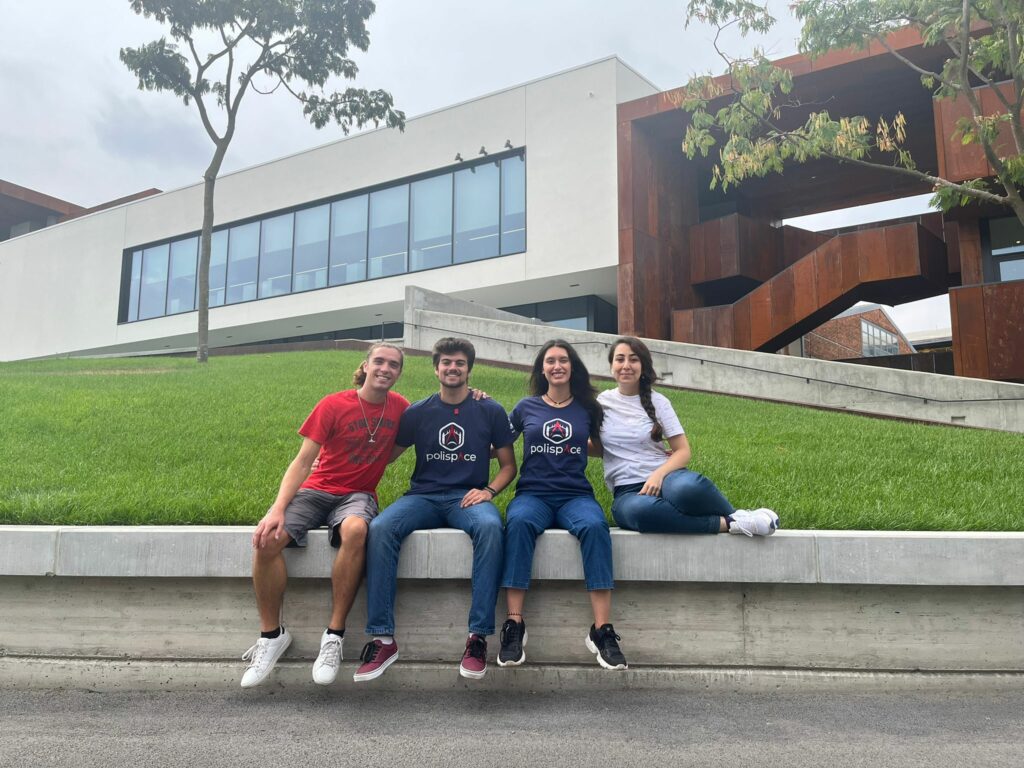
The LEXICON project makes lunar human settlements even a more tangible reality: thanks to this filtering system, the astronaut’s life-support systems could avoid obstructions and keep working even in the hostile lunar environment.
And who knows what will be next to lunar missions?
Well, 100 years ago, stepping on the Moon was believed to be impossible. And here we are. We don’t know what the future holds for us. But remember, reality always overcomes fiction.

It was a great experience working as a project manager with a great team!
Saba Mohammadi – LEXICON Project Manager
